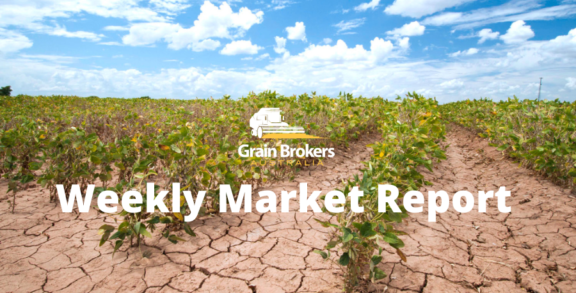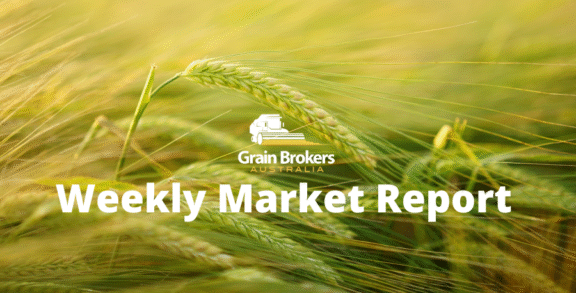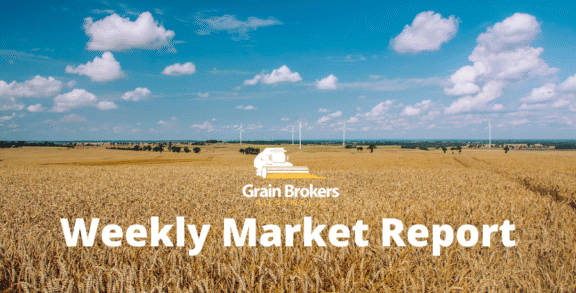
The drought conditions that severely dented Russian grain production from this year’s harvest have continued unabated into the autumn in many regions, delaying the next winter crop planting program and presenting an early reminder of potential global supply risks for next season.
According to Black Sea consultancy SovEcon, winter wheat seeding rates have fallen to an 11-year low, with planting in the South and Volga regions already 400,000 hectares behind last year, while the Central region is 200,000 hectares behind.
The winter wheat seeding program in Russia generally commences in late August, with September the optimum planting window, affording the crop ample time to emerge and be well established ahead of the colder winter months. While there is still time to recover, the rainfall forecasts suggest very little respite until late October. And with the seeding program traditionally ending in early November, that will leave very little time to plant the remaining area.
Over the past 30 days, the European part of the Russian Federation has received less than 20 per cent of the long-term average precipitation, with over 75 per cent of the wheat growing areas receiving little to no measurable rainfall across the entire month of September. Moscow based consultant IKAR reported that most of European Russia is experiencing “tremendous dryness” and that “farmers are hesitant to sow in the dust.”
In Russia’s Southern District, where winter wheat production is heaviest, September was the seventh consecutive month in which precipitation was short of the long-term average. Rainfall registrations were 47 per cent of normal over those seven months, the driest in at least three decades. Accumulated rainfall in many parts of the district for the five weeks from September 1 to October 6 was reportedly at 20-year lows.
Russia’s state weather forecast agency reported that winter crop conditions in some key producing regions were “worse than usual” at the start of October due to the lack of precipitation, specifically noting the Central, Southern, North-Caucasus and parts of the Volga regions. “A precipitation deficit will persist, and the conditions for the emergence and growth of winter crops in most areas will be worse than usual,” the agency said.
The widespread moisture deficiency is seriously curtailing field activity and putting recently emerged crops under immediate stress, increasing the likelihood of entering the winter dormancy period in poor condition. According to SovEcon, the Volga region, where the autumn growth period ends earliest and frosts begin first, is particularly at risk.
The situation in Volgograd and Saratov regions, Russia’s fourth and sixth largest grain producing regions, is particularly dire. The neighbouring Voronezh region, the fifth-largest grain-producing region in 2023, declared a state of emergency due to drought last Tuesday. With a harvest of over six million metric tonne of grain, it produced more than 4 per cent of the nationwide harvest total last year. The recently concluded harvest could be as low as 4.5MMT.
Further north, the Oryol region, Russia’s tenth largest grain producer, followed suit on Wednesday, also declaring a state of emergency due to the severe drought and subsequent winter crop damage. According to the Oryol agriculture ministry, the adverse weather conditions have resulted in a dangerous agrometeorological phenomenon known as atmospheric drought, which has led to the death of recently emerged winter wheat seedlings. The state of emergency declaration allows farmers to obtain insurance payments and government support to help them remain viable.
With production risk to next year’s winter wheat crop emerging, concern around the pace of this season’s Russian export program and the potential threat to domestic supplies is increasing. According to a statement from the Russian Grain Union (RGU), grain exports of around 17MMT in the July to September quarter “exceeds reasonable parameters based on the export potential of the season and demand on the world market”.
And the Russian farmers have acted accordingly, holding onto old crop wheat supplies as a drought hedge against decreasing new crop production potential in the hope of pushing export accumulation prices higher. With supplies close to Russia’s Black Sea ports running low, and market liquidity dwindling, exporters are already having to source grain from further afield, adding to the cost and pushing export offers higher. Late last week Russian 12.5 per cent protein wheat was being offered at US$228.50 free on board (AUD338 FOB) for late October or first half November loading. That is an increase of more than five per cent since the middle of September.
The RGU has reportedly asked the government to review the methodology behind the allocation of export quotas for the second half of the marketing year, given the exceptional (and cheap) export pace in the first quarter. “The export potential of the current season is determined at the level of 60MMT, which is 16 per cent lower than last season. The rest should be left for domestic consumption,” the RGU statement emphasises.
Under the current quota system, Russian exporters are allocated quotas for the second half of the export year based on their first half export volumes. The RGU believes “it is necessary to cool down the enthusiasm of some companies and entrepreneurs who literally export domestic grain to third countries for next to nothing in the expectation of getting an increased quota. There is no reason to export Russian grain at such low prices.”
Last week, SovEcon reduced its Russian wheat export forecast for the 2024/25 marketing year, dropping it from 48.1MMT to 47.6MT. Total grain exports were lowered from 56.5MMT to 55.4MMT, with the agency’s corn export estimate cut by 0.2MMT to 2.2MMT and the barley export forecast cut by 0.4MMT to 2.4MMT. The reductions reflect a small cut in the size of the wheat crop and an expected increase in domestic feed demand, but “reports of sluggish global demand have not slowed Russia’s wheat exports”, managing director Andrey Sizov stated.
The grower and trade may have reacted to the unfolding situation, but if, when and how Moscow reacts is yet to be revealed. However, rumours are circulating that the government could make a move to slow the export pace, either via a smaller quota in the first half of 2025, or by manipulating the export tax, as they have already done on corn.
Call your local Grain Brokers Australia representative on 1300 946 544 to discuss your grain marketing needs.
Written by Peter McMeekin.





